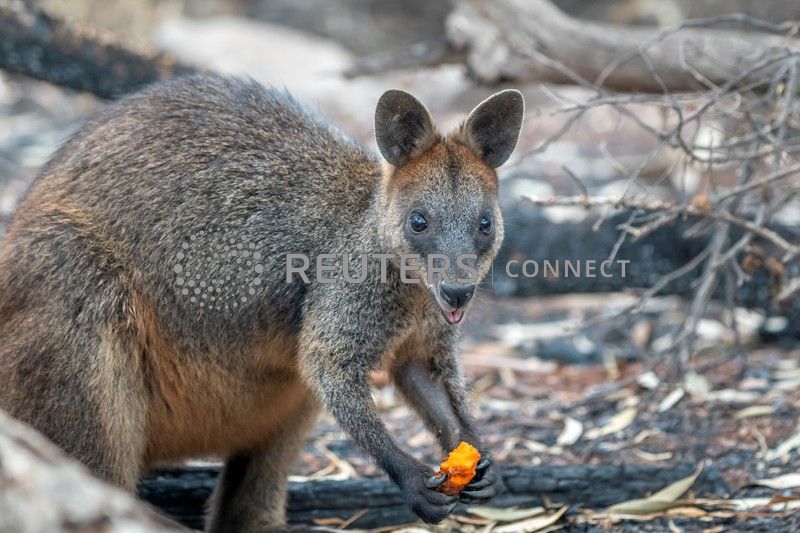MELBOURNE (Reuters) – Australia’s peak tourism body estimated the country’s bushfire crisis has so far cost the industry almost A$1 billion ($690 million) and called for urgent help from the government to lure back visitors.
Industry bosses were due to meet with Tourism Minister Simon Birmingham later on Thursday as storms and heavy rain brought some respite from months of fierce bushfires across Australia’s east coast.
The fires, which have killed 29 people and razed bushland across an area the size of Bulgaria, have hit several coastal towns at the height of the profitable summer season.
“People have basically stopped travel,” Simon Westaway, executive director of Australian Tourism Industry Council (ATIC), told Reuters. “And that’s absolutely understandable: human nature kicks in.”
Even though recent cooler conditions have led some tourist destinations to reopen after they were evacuated because of the fires, people remain wary of visiting.
Images of burnt-out towns, people huddled on beaches to escape huge flames, dead wildlife and thick smoke hanging over major cities have been beamed around the world.
The qualifying rounds of Australian Open in Melbourne this week, the first tennis Grand Slam of the year, have been blighted by complaints from players about the pollution.
“The imagery of the fires in the global marketplace is very bad for our country,” Westaway said. “We are worried about the contagion that may have.”
Tourism accounts for more than 3% of Australia’s A$1.95 trillion economy, with 9 million foreigners visiting the country annually and domestic tourism growing.
Accommodation booking cancellations in non-fire zones have reached upwards of 60%, while in fire-affected areas there were no tourists at all, Westaway said. Many destinations rely heavily on domestic tourism, as well as international visitors.
This week’s wet weather brought some temporary respite for fire-hit areas, but also came with the warning of potential flash floods and lightning that could ignite new fires.
Prime Minister Scott Morrison earlier this week welcomed a U.S. move to downgrade a travel warning and has stressed that Australia is open for business.
Birmingham said he would seek firsthand feedback from tourism bosses at Thursday’s meeting and devise a strategy to reassure visitors that many tourism destinations are untainted by fires.
Following are some highlights of what is happening in the bushfire crisis:
** The Australian Bureau of Meteorology provided some welcome news on Thursday with a new forecast that there is a 50% chance that the bulk of the country’s east will receive average rainfall from March 1 through May 30. Still, BOM warned that warned that follow-up rains will be needed to end a three-year drought.
** There were 85 fires burning across the state of New South Wales on Thursday, with 30 of them yet to be contained, while 19 fires were alight in Victoria, according to fire authorities.
** The rain has brought relief for a number of firefighters working across New South Wales state. “Although this rain won’t extinguish all fires, it will certainly go a long way toward containment,” state fire services said.
** Emergency responders in Victoria have dealt with nearly 600 cases of falling trees, flash flooding and other damage in since late Wednesday and warned of more risks from storms starting Monday.
** Canberra, Sydney and Melbourne ranked among the top 50 most polluted major cities worldwide on Thursday, according to AirVisual’s pollution ranking for major global cities, with winds set to bring more smoke to Melbourne over the weekend.
** The smoke haze that has plagued Australia’s major cities for weeks and has been tracked by NASA circumnavigating the globe.
** Australia’s conservative government has softened its rhetoric on climate change amid the crisis, acknowledging this week that changes are real and the country needs a strategy of “adaptation” and “resilience”.
** Australia’s Wollemi Pines, giant prehistoric trees that were thought to be extinct until 1994, were specially protected by firefighters as blazes swept through their secret location in a NSW national park.


